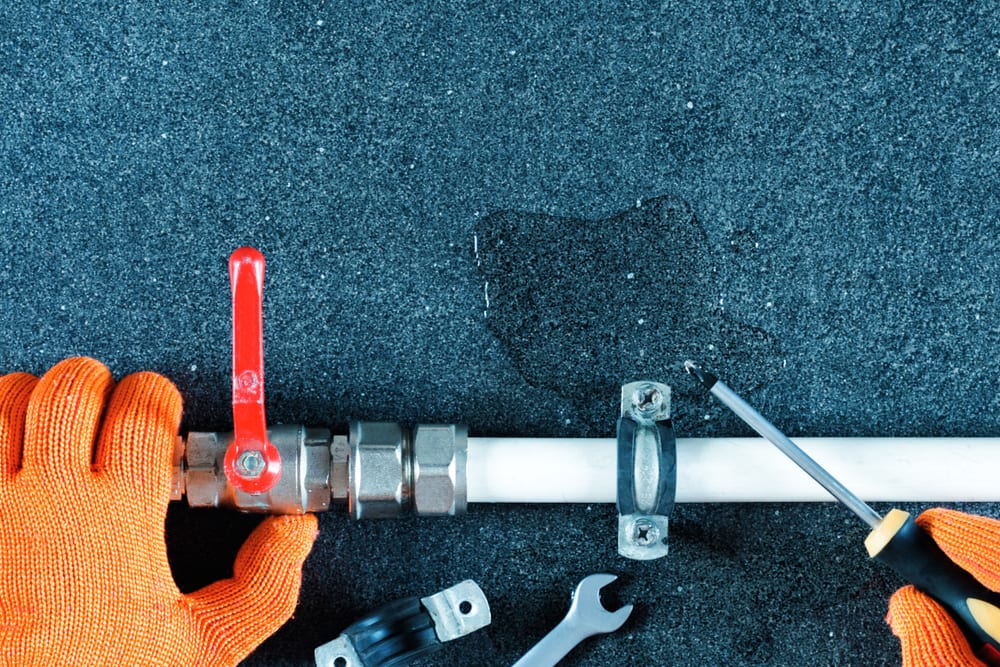6 Ways to Locate Concealed Water Leakages in Your Residence
6 Ways to Locate Concealed Water Leakages in Your Residence
Blog Article
In this article in the next paragraph you will find additional sound material pertaining to Detecting hidden plumbing leaks.
.jpg)
Early discovery of dripping water lines can minimize a potential calamity. Some small water leaks may not be noticeable.
1. Take A Look At the Water Meter
Checking it is a surefire method that helps you discover leakages. If it moves, that suggests a fast-moving leakage. This means you may have a slow-moving leakage that can also be underground.
2. Examine Water Consumption
Examine your water expenses and also track your water intake. As the one paying it, you need to see if there are any kind of inconsistencies. If you spot sudden changes, despite your usage coinciding, it means that you have leaks in your plumbing system. Bear in mind, your water costs ought to drop under the same variety every month. An unexpected spike in your costs shows a fast-moving leak.
A steady rise every month, also with the exact same routines, shows you have a slow-moving leakage that's likewise slowly rising. Call a plumber to completely check your property, specifically if you feel a cozy area on your flooring with piping below.
3. Do a Food Coloring Test
When it comes to water intake, 30% comes from toilets. If the color in some way infiltrates your dish throughout that time without flushing, there's a leak between the container and also bowl.
4. Asses Exterior Lines
Don't fail to remember to inspect your outdoor water lines also. Ought to water seep out of the link, you have a loosened rubber gasket. One small leak can throw away bunches of water as well as spike your water expense.
5. Evaluate the scenario as well as evaluate
Property owners need to make it a routine to examine under the sink counters and even inside closets for any type of bad odor or mold and mildew development. These two red flags suggest a leak so timely interest is called for. Doing routine evaluations, even bi-annually, can conserve you from a major trouble.
Inspect for discolorations and also deteriorating as most pipes and also appliances have a life span. If you believe dripping water lines in your plumbing system, do not wait for it to escalate.
Early detection of leaking water lines can minimize a potential catastrophe. Some tiny water leaks might not be noticeable. Examining it is a surefire method that assists you uncover leakages. One tiny leak can throw away bunches of water and surge your water expense.
If you believe leaking water lines in your plumbing system, don't wait for it to intensify.
How to Know If Your Home Has a Hidden Leak
Water Meter Reveals Inexplicable Water Usage
If you’d like to test whether or not there’s a leak somewhere in your home, you can do this using your water meter. Here is how to conduct the test:
Don’t use any water in your home for at least 30 minutes; this also means not turning on faucets or water-using appliances.
Go outside, and check your water meter for activity.
If your water meter shows that there was activity, even though no one was using any water, this proves that there is a leak in your home.Visible Mold or Mildew Growth
Leaks behind walls create moist, dark environments that allow mold and mildew to grow and thrive. Eventually, you might see mold growth forming on the wall closest to a hidden leak.
If mold is growing in an area that receives a high amount of moisture, such as a bathroom, it may simply be an indication that better ventilation is needed. However, if you see mold growth on a wall or the ceiling in an area where you would not expect, you probably have a hidden leak.
Musty, Mildew Odor
Sometimes you might not be able to see the mold or mildew that is growing as a result of a leak. However, the smell can give the problem away just as easily. If you catch a whiff of something musty, there’s a good chance that old water is collecting somewhere in your home that you can’t see.
Stained/Warped Walls, Ceilings, or Floors
When your home soaks up water, a variety of red flags can become visible, including ceiling stains, bubbling drywall, warped walls, and sagging floors. While these issues can be caused by excess humidity, they can also be signs that a pipe or plumbing connection has started leaking behind your walls.
Inexplicably High Water Bill
After a while, you get a general sense for what your water bill should be. If you own a pool or sprinkler system, your bill will tend to be higher during summer. However, if you receive a water bill that seems especially high, and you can’t figure out what caused it, then you may have a hidden leak somewhere that’s increasing your bill.
https://www.plumbingjoint.com/blog/2019/july/how-to-know-if-your-home-has-a-hidden-leak/

I recently found that blog post on Locating water leaks while perusing the search engines. For those who appreciated our blog entry plz do not forget to pass it around. We treasure reading our article about Leaking water lines.
Report this page